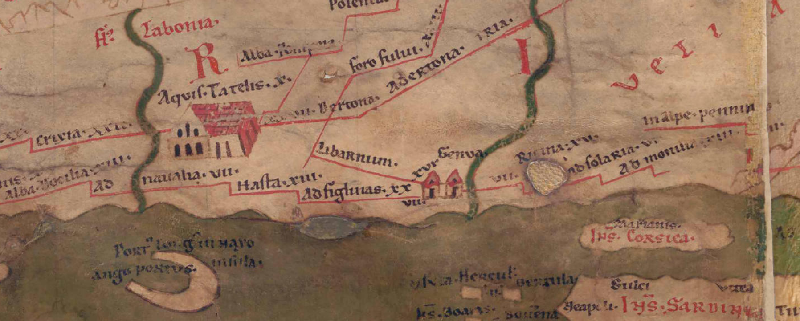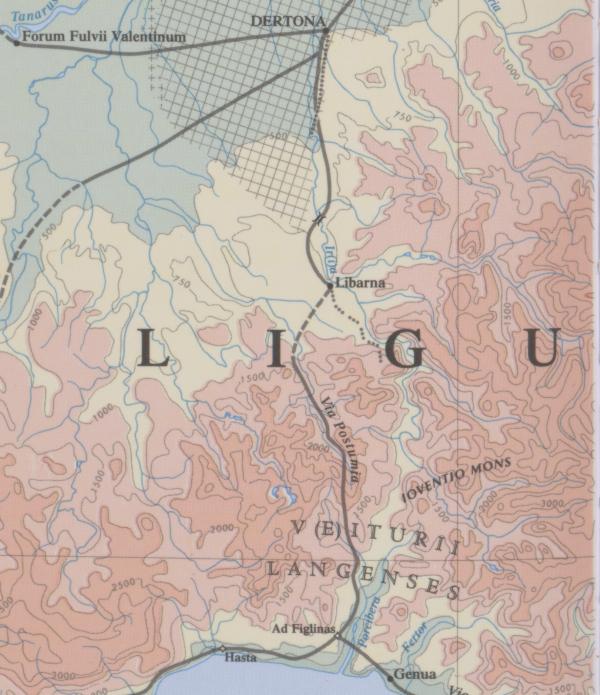
Tabula Peutingeriana – Einzelanzeige
| Toponym TP (aufgelöst): | Libarnum |
| Name (modern): | Serravalle Scrivia |
| Bild: |  Zum Bildausschnitt auf der gesamten TP |
| Toponym vorher | - Dertona |
| Toponym nachher | XVI (?) Genva (Genua) |
| Alternatives Bild | --- |
| Bild (Barrington 2000) |
 |
| Bild (Scheyb 1753) | --- |
| Bild (Welser 1598) | --- |
| Bild (MSI 2025) | --- |
| Pleiades: | https://pleiades.stoa.org/places/383694 |
| Wikipedia | https://it.wikipedia.org/wiki/Libarna |
| Großraum: | Italien |
| Toponym Typus: | Ortsname ohne Symbol |
| Planquadrat: | 2B5 |
| Farbe des Toponyms: | schwarz |
| Vignette Typus : | --- |
| Itinerar (ed. Cuntz): | Libanum (294,5) |
| Alternativer Name (Lexika): | Libarna (DNP) |
| RE: | Libarna - https://elexikon.ch/RE/XIII,1_13.png |
| Barrington Atlas: | Libarna (39 D4) |
| TIR / TIB /sonstiges: | Libarna (TIR L 32, 84) |
| Miller: | Libarnum |
| Levi: |
|
| Ravennat: | Levarmis (p. 71.01), Levarnis (p. 71.05) |
| Ptolemaios (ed. Stückelberger / Grasshoff): | Λιβάρνα (Λίβαρνον) (3,1,45) |
| Plinius: | Libarna (3,49) |
| Strabo: |
|
| Autor (Hellenismus / Späte Republik): |
|
| Datierung des Toponyms auf der TP: | frühe Kaiserzeit (einschließlich Flavier) |
| Begründung zur Datierung: | Erste überlieferte literarische Erwähnung bei Plinius dem Älteren. |
| Kommentar zum Toponym: |
Kommentar (Köhner) |
| Literatur: |
[1] Desjardins, Table, p. 106, col. 2, no. 1 (unter no. 43). |
| Letzte Bearbeitung: | 11.12.2025 19:58 |
Cite this page:
https://www1.ku.de/ggf/ag/tabula_peutingeriana/trefferanzeige.php?id=3327 [zuletzt aufgerufen am 01.01.2026]